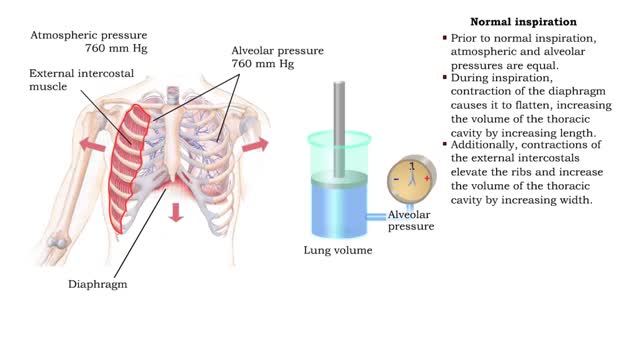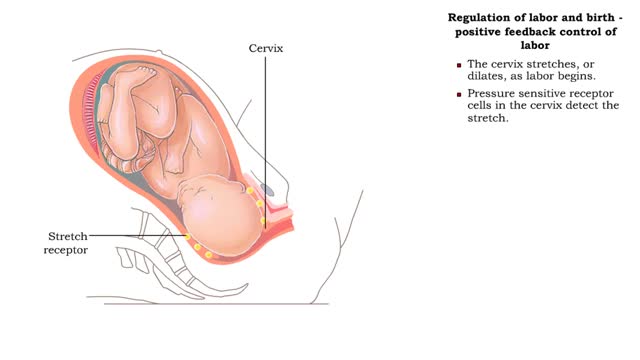Search Results
Results for: 'Neural regulation of blood pressure'
By: HWC, Views: 11443
• The blood flow redistributes fluids that have different pH values between body regions. • The regulation of the blood pH is important to maintain homeostasis. • Blood pH is regulated by: • Chemical buffers. • The respiratory system. • The urinary system. • All thes...
Gas exchange - partial pressure, locations, external and internal respiration
By: HWC, Views: 11521
▪ In a mixture, each individual gas exerts a pressure that is proportional to the concentration of that gas within the mixture. • This part of the total pressure is called a "partial pressure". • A gas moves along the part of the pressure gradient determined by its own concentration. ...
Pressure volume relationships - Normal inspiration and expiration
By: HWC, Views: 11199
• Changing the relative pressure in the compartments can control the direction of airflow between compartments. • In a closed compartment, pressure and volume are inversely related. • Reducing the volume will increase the pressure. • Increasing the volume will decrease the pressure. ...
By: HWC, Views: 10636
Baroreceptors located In the carotid sinus and the arch of the aorta respond to increases in blood pressure. Increased blood pressure stretches the carotid arteries and aorta causing the baroreceptors to increase their basal rate of action potential generation. Action potentials are conduct...
By: Administrator, Views: 14431
Circulation of blood through the chambers of the heart Septum divides heart into the right and left heart. Each side contains an upper and lower chamber: Atria, or upper chambers, receive blood. Ventricles, or lower chambers, pump blood. Valves control intake and outflow of blood in chamber...
Labor and Childbirth - The Three Stages of Labor: Dilation, Expulsion & Placental مراحل الولادة
By: HWC, Views: 11758
Regulation of labor and birth - effects of estrogen and oxytocin on onset of labor • Just prior to birth, high placental corticotropin-releasing hormone levels stimulate the production of more estrogen. • High estrogen levels overcome the inhibitory effects of progesterone on uterine sm...
ADH and the arterioles, kidneys, sweat glands and the Atrial natriuretic peptide (ANP)
By: HWC, Views: 11425
• ADH is also known as vasopressin. • Produced by hypothalmus and secreted by neurosecretory cells in posterior pituitary gland. • Responds to high blood osmotic pressure representing low amounts of water in the blood. • Binds to smooth muscle cells in walls of arterioles, stimulate...
Medullary osmotic gradient - influencing factors
By: HWC, Views: 11789
▪ Maintenance of fluid volume and composition, despite changes in water input and output, is crucial to a healthy life. ▪ Regulation of blood's osmolarity, or solute concentration, is a function of the nephron. • Normal osmolarity is maintained by the ability of the nephron to alter uri...
Oxygen - hemoglobin dissociation curve & Hemoglobin's affinity with oxygen - acidity
By: HWC, Views: 11908
• The partial pressure of oxygen is a primary factor influencing the degree of saturation of hemoglobin. • The Po2 determines the number of oxygen molecules that can bind or dissociate from hemoglobin. • Blood in vessels coming from the lungs is very high in Po2 so saturation is high. ...
Advertisement











